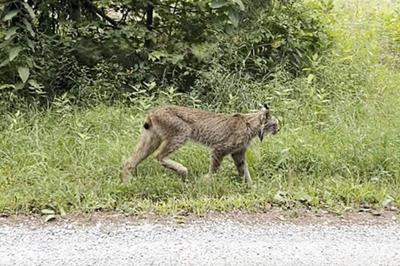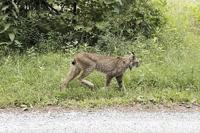SHREWSBURY, Vt. (AP) — A Canada lynx, an endangered species in Vermont, has been confirmed in the state for the first time since 2018, and farther south than the last confirmed sighting.
A Shrewsbury man was driving home on Saturday evening when he saw the large cat walking along the side of a rural road. He went home to get his cell phone, returned and took video of the animal, he said on Wednesday.
“This newest sighting is especially exciting because the cat was spotted in Rutland County, far south of most confirmed lynx reports in Vermont,” said Brehan Furfey, wildlife biologist and furbearer project leader with the Vermont Fish and Wildlife Department.
Canada lynx are endangered in Vermont and threatened nationally, she said in a statement Wednesday. “That makes any verifiable lynx sighting in our state important."
There are resident breeding populations in northern Maine and northern New Hampshire, northeastern Minnesota, northwestern Montana and northern Idaho, north-central Washington and western Colorado, according to the U.S. Fish and Wildlife Service. They are similar looking to bobcats but have long black ear tufts and short, black-tipped tails, the service said. They also have large paws and long hind legs making them highly adapted to hunting snowshoe hare in snow, the service said.
Vermont is on the southernmost edge of the Canada lynx's range and most confirmed sightings are in northeastern Vermont, which has the best climate, habitat and food sources for lynx in the state, the department said. Canada lynx are adapted to hunt snowshoe hares and “both species need young forest habitats and reliable snowpack to thrive,” Furfey said.
Furfey suspects this was a male lynx moving through the region looking to establish its own territory, the department said. The behavior is called “dispersing" in which lynx can move quickly over long distances, according to the department.
The department has received more than 160 reports of lynx since 2016 with only seven of those confirmed. It said the most credible one was from Jericho in 2018.








































